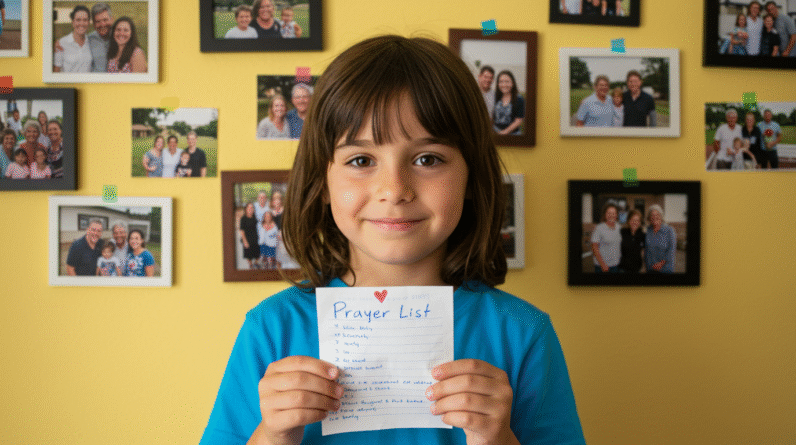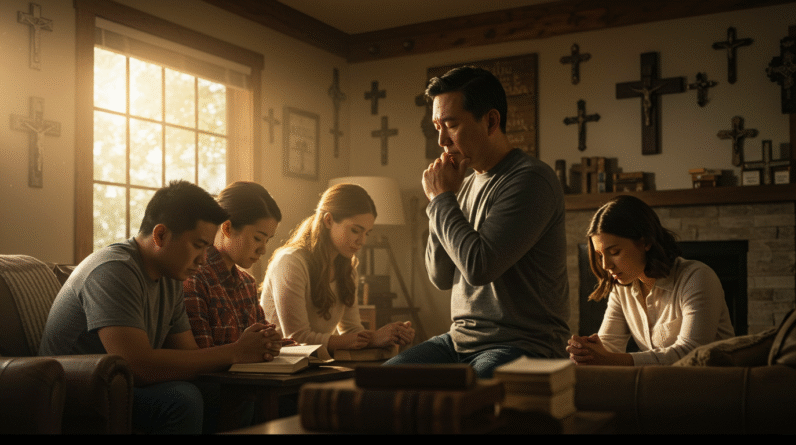How to Model a Genuine Faith to Your Children at Home
There’s something profoundly transformative about modeling genuine faith at home. It’s not just in the big moments, like Sunday mornings or holiday gatherings; it’s in the everyday routines and quiet whispers of our lives that our children truly learn what it means to live a life of faith. But how exactly can you model such faith effectively and authentically to your children? Let’s dive into this conversation, and explore practical ways to make this a reality in your home.
Why Modeling Faith at Home Matters
First off, let’s talk about why modeling faith at home holds so much importance. You might have heard the saying that faith is “caught, not taught.” While structured religious education is important, children often learn more from watching their parents live out their faith in daily life. Your actions, words, and reactions all bear witness to the kind of faith you hold. The home is the most influential environment for children, and by consistently modeling faith at home, you are laying a spiritual foundation for their lives.
Understanding Your Role
As a parent, you may not realize just how much your children look up to you. They listen to your stories, watch your habits, and absorb your reactions to life’s challenges and joys. You are their role model, whether you choose to be or not. The Bible speaks about the importance of passing down faith: “Deuteronomy 6:6-7” emphasizes that these commandments should be upon your hearts. Talk about them when you sit at home, when you walk along the road, when you lie down, and when you get up. Your diligence in this supports your efforts to model faith authentically.
Building Daily Habits That Reflect Faith
It’s the little things that often count the most. Incorporating faith into your daily life can start with simple habits that make a big difference over time. Here are a few suggestions:
- Morning Devotions: Start the day with a short devotional or a prayer. This could be as simple as reading a verse together over breakfast or listening to a short podcast.
- Gratitude Journal: Encourage your family members to write down one thing they are grateful for each day. This practice shifts focus from what’s missing to what’s present and good.
By embedding these practices in your routines, you create a rhythm that naturally integrates faith into everyday life.
The Power of Prayer
Prayer is a cornerstone of a life lived in faith. It’s a direct line of communication with God and a powerful way to model faith at home. When your children see you pray, they learn that prayer is not just a ritual but an intimate part of a faith-filled life.
Praying With and For Your Children
Invite your children into prayer. This could mean incorporating prayer into bedtime routines or gathering together for a family prayer time each week. Make it a moment not only to ask for guidance but also to express gratitude and to intercede for others.
Also, don’t underestimate the power of letting your children see you pray alone. A personal prayer time, perhaps early in the morning or late at night, shows them that prayer is a personal, abiding practice. “Philippians 4:6” encourages us to present our requests to God with thanksgiving, which fosters a tone of gratitude and trust, even in challenging times.
Living with Integrity
Integrity in faith means being consistent and authentic in your beliefs and actions. “Proverbs 20:7” tells us that the righteous lead blameless lives and blessed are their children after them. Your integrity—consistently showing up with kindness, honesty, and fairness—speaks volumes to your children about living a Christian life.
Walking the Walk
Your words must match your deeds. If you preach kindness but act cruelly or dishonestly, your children will notice the hypocrisy. They will learn from what you do, not just what you say.
- Consistency in Discipline: Show them the values of fairness and love in correction. Discipline with understanding, not anger.
- Honesty in Errors: Admit when you’ve made a mistake. This model’s humility and understanding of grace.
By living with integrity, you nurture a trusting and secure environment where faith can flourish.

Storytelling: Sharing Your Faith Journey
Stories are powerful. Sharing personal testimonies of how your faith has influenced or changed your life can have a profound impact on your children. These stories don’t have to be grandiose; often, the small, personal reflections are the most impactful.
Making Faith Personal and Relatable
Tell your children about a time you felt God’s presence or how your faith helped you through a difficult time. Let them know about your ongoing journey, your questions, and even your doubts. Sharing your vulnerabilities creates an opportunity for genuine connection and conveys that faith is a living, breathing journey.
Emphasize stories from the Bible and relate them to everyday life. “Joshua 24:15” boldly states the choice to serve the Lord. Discuss stories of perseverance and courage, demonstrating that these biblical lessons remain relevant.
Cultivating a Compassionate Home Environment
A loving, compassionate environment is fertile ground for a faith that grows. Teach your children about love in action by showing love to them and others. “John 13:34” commands us to love one another as Christ has loved us, setting a benchmark for our relationships both inside and outside the home.
Encouraging Acts of Kindness
Encourage your children to engage in acts of kindness and service, both big and small. This might mean helping a neighbor, writing a letter to someone who is lonely, or participating in a community project. Service is faith in action and allows children to see the tangible impact of living out their beliefs.
Such acts demonstrate empathy and compassion, reinforcing the message that faith is not just personal but relational—it’s about how we treat and care for those around us.
Involving Your Children in Church Life
Lastly, your home is part of a larger community. Involvement in church life can provide additional support and resources for modeling faith at home. Attend services together, participate in church events, and take part in communal worship. This connection can fortify the lessons learned at home with the support of a community of believers.
Creating a Community
Offer opportunities where your children can interact with peers and mentors within the church. Seek out youth groups, Sunday school, or volunteer opportunities that can supplement your work at home and provide them with alternate role models living out their faith.
The church serves as an extension of your home environment and encourages children to see faith as a communal experience, building a sense of belonging and purpose.
Conclusion
Modeling faith at home is an ongoing journey rather than a destination. It requires patience, dedication, and, most importantly, a heart open to continuous growth. Remember that you’re not alone in this journey. There is strength in your community, in the Word, and in prayer.
Explore More
For further reading and encouragement, check out these posts:
👉 7 Bible Verses About Faith in Hard Times
👉 Job’s Faith: What We Can Learn From His Trials
👉 How To Trust God When Everything Falls Apart
👉 Why God Allows Suffering – A Biblical Perspective
👉 Faith Over Fear: How To Stand Strong In Uncertain Seasons
👉 How To Encourage Someone Struggling With Their Faith
👉 5 Prayers for Strength When You’re Feeling Weak

📘 Jesus and the Woman Caught in Adultery – Grace and Mercy Over Judgement
A powerful retelling of John 8:1-11. This book brings to life the depth of forgiveness, mercy, and God’s unwavering love.
👉 Check it now on Amazon
As a ClickBank Affiliate, I earn from qualifying purchases.
Acknowledgment: All Bible verses referenced in this article were accessed via Bible Gateway (or Bible Hub).
“Want to explore more? Check out our latest post on Why Jesus? and discover the life-changing truth of the Gospel!”








